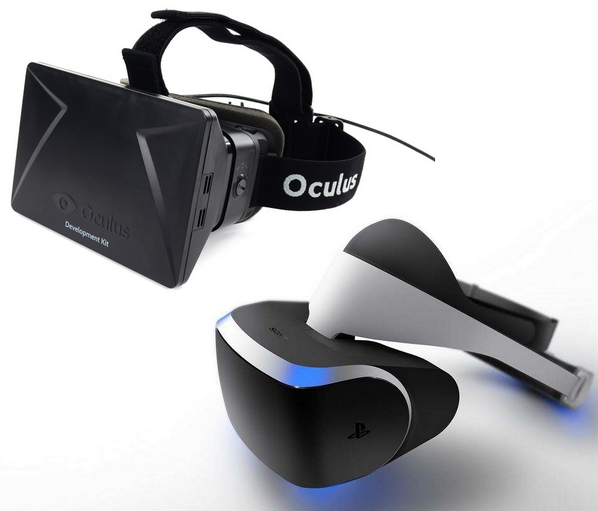By Jamaal Ryan
GDC in some ways is a more valuable conference than say your E3es and PAXes. While there might not be much in the light of new game announcements (though this year, we got a chance to see games like Framed, Double Fine’s Hack n’ Slash, Monument Valley, and Among the Sleep), GDC gives developers a platform to address all things game design, game development culture, along with tools and platforms that will become integral parts of the industry’s future.
VIRTUAL REALITY
VR was arguably the most prominent hardware theme at GDC
this year. Until last week’s conference, the Oculus Rift stood as the primary (practically
solitary) piece of hardware representing the modern day concept of “virtual
reality”. And Oculus continued to impressed users at GDC with its Dev Kit 2
which boasts increased display specs (900x1080 for both eyes on an OLED panel),
decreased motion blur, and an external camera to detect positional tracking.
But simply based on pure novelty, Sony’s Project Morpheus
was THE VR device to talk about last week.
Though with some immersion breaking nicks such as some light
bleed at the bottom of the device and narrower field of vision, Project
Morpheus was said to hold a near comparable VR experience next to the Rift. Morpheus
hit the ground running with positional tracking already built into the core
experience thanks to the TRON like lights that line the device as well as the Playstation
Eye, and Move integration finally gives the motion control device a purpose.
Motion control and VR have existed separately in many respects up until now;
either you used three dimensional movements for a 2D display, or used
traditional button inputs for a 3D display. But being Morpheus’ compatibility
with Move bridges that encompassing immersion at a seal, we can look forward to
full somatic and sensory virtual gaming experiences.
Other VR hardware and peripherals were showcased at GDC as
well, including: the Cortex, Seebright, and the Omni Treadmill peripheral.
But today, we can’t discuss virtual reality without
mentioning Facebook.
Yesterday, Facebook helped me release my bowels when they
announced their acquisition of Oculus Rift for $2 Billion.
“Holy shit” was indeed the correct and unanimous response. Whether
you’re naturally cynical or even a bit of an optimist, the wave of concern was
unavoidable. From the “big fish eats little fish” analogy to Facebook’s
frighteningly expanding empire, Facebook’s “infringement” in the virtual
reality market is, quite frankly, “creepy” as Minecraft’s Notch put it who
pulled their game from Oculus support along with other developers putting their
projects on hold.
But creepy doesn’t necessarily mean a bad thing.
The monetary benefits of Facebook’s acquisition is undeniable;
Oculus will have far more resources than they had as a project originally
funded by Kickstarter (I’m truly sorry backers), and the financial costs – according to Oculus CEO Brendan Iribe – will in
the end make Oculus cheaper for consumers. Secondly, if we were to take Mark
Zuckerberg’s claims in that Facebook will not infringe upon Oculus’ direction,
how this device will be used will be an in-addition-to, and not in-place-of when
it comes to games. Many have already imagined the Second Life/Playstation Home
simulators where people enter virtual worlds where they interact with one
another. The fact of the matter is Oculus is bound to have a plethora of uses
outside of gaming.
Sounds familiar? That’s because Sony’s President of
Worldwide Studios Shuhei Yoshida claimed vision for Morpheus is quite similar.
After Morpheus’ announcement, Oculus cofounder Palmer Luckey stated that Sony’s
Morpheus was a “good thing”, and was looking forward to having other VR devices
that doesn’t suck. Being that the two devices aren’t in direct competition,
they’ll more work as inspirations for one another.
Oculus is clearly at the head of the game when it comes to
virtual reality, and with such a led in potential, hopefully this will lift the
VR market as a whole.
This concludes a look back at GDC 2014. Thanks for reading.

No comments
Post a Comment